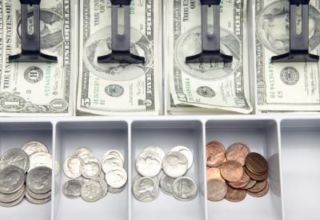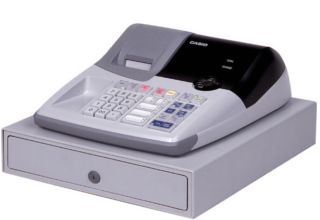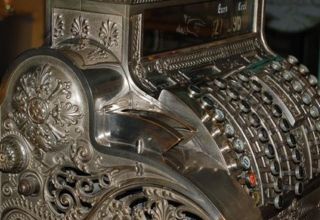How to Program Sharp Electronic Cash Registers
Cash Register
1- Power up the cash register by pressing the "Power" button. Setting the date and time will allow the correct date and time to be printed on all of your receipts. Use the keypad to enter in the date following the MM/DD/YY format. Press the "#/TM/SBTL" key after entering this information to save the date. Enter in the time using the 24 hour format, with hour first then the minutes. Press the "#/TM/SBTL" button again to save the time.
2- Obtain the correct tax rates for your business by contacting the local tax office for your city or county. This number will reflect local, state and federal tax rates for your particular business. Programming this number into the cash register will add these taxes to every transaction total, ensuring that the customer pays the correct amount for his purchase.

3- Press the "#/TM/SBTL" button to begin programming your tax rate. Press the "9" button on the register's keypad, followed by the "@/FOR" button. You can save up to four different tax rates on your Sharp cash register. Press a number from 1 through 4 on the keypad to select the number where you want to save this particular tax, followed by the "@/FOR" button.
4- Enter in the tax rate by pressing the corresponding number buttons on the keypad. This number will represent the percentage of taxes paid by the customer (for example, "6" will be saved as 6 percent). Enter in a decimal point, if necessary. Press "@/FOR" to save. Next, enter in the lowest taxable amount, which in most cases will be 0. Press "@/FOR" again to save.
5- Press the "#/TM/SBTL" button when finished entering in the tax information. Press "CA/AT" to save this formula and return to ready mode.
2- Obtain the correct tax rates for your business by contacting the local tax office for your city or county. This number will reflect local, state and federal tax rates for your particular business. Programming this number into the cash register will add these taxes to every transaction total, ensuring that the customer pays the correct amount for his purchase.

4- Enter in the tax rate by pressing the corresponding number buttons on the keypad. This number will represent the percentage of taxes paid by the customer (for example, "6" will be saved as 6 percent). Enter in a decimal point, if necessary. Press "@/FOR" to save. Next, enter in the lowest taxable amount, which in most cases will be 0. Press "@/FOR" again to save.
5- Press the "#/TM/SBTL" button when finished entering in the tax information. Press "CA/AT" to save this formula and return to ready mode.











